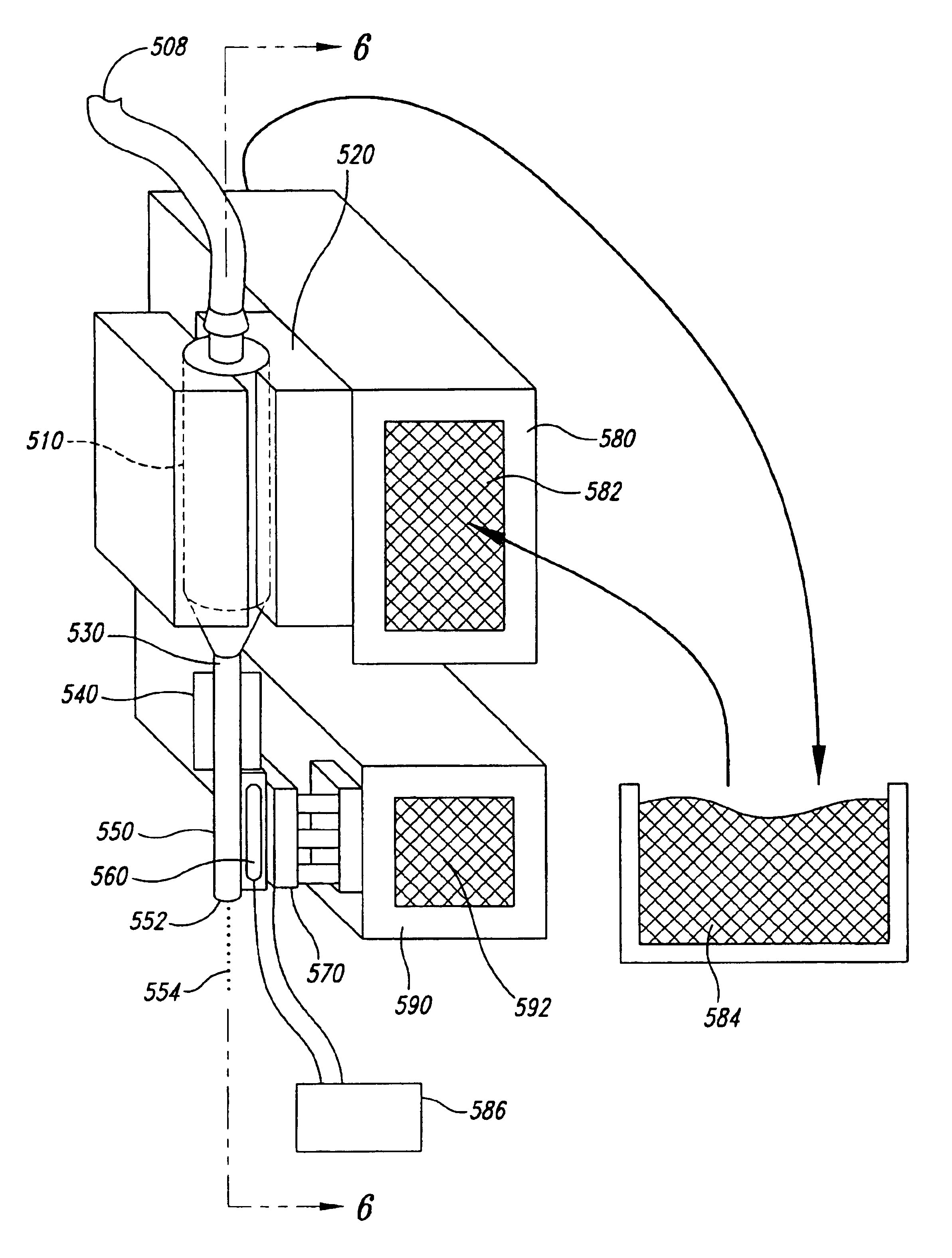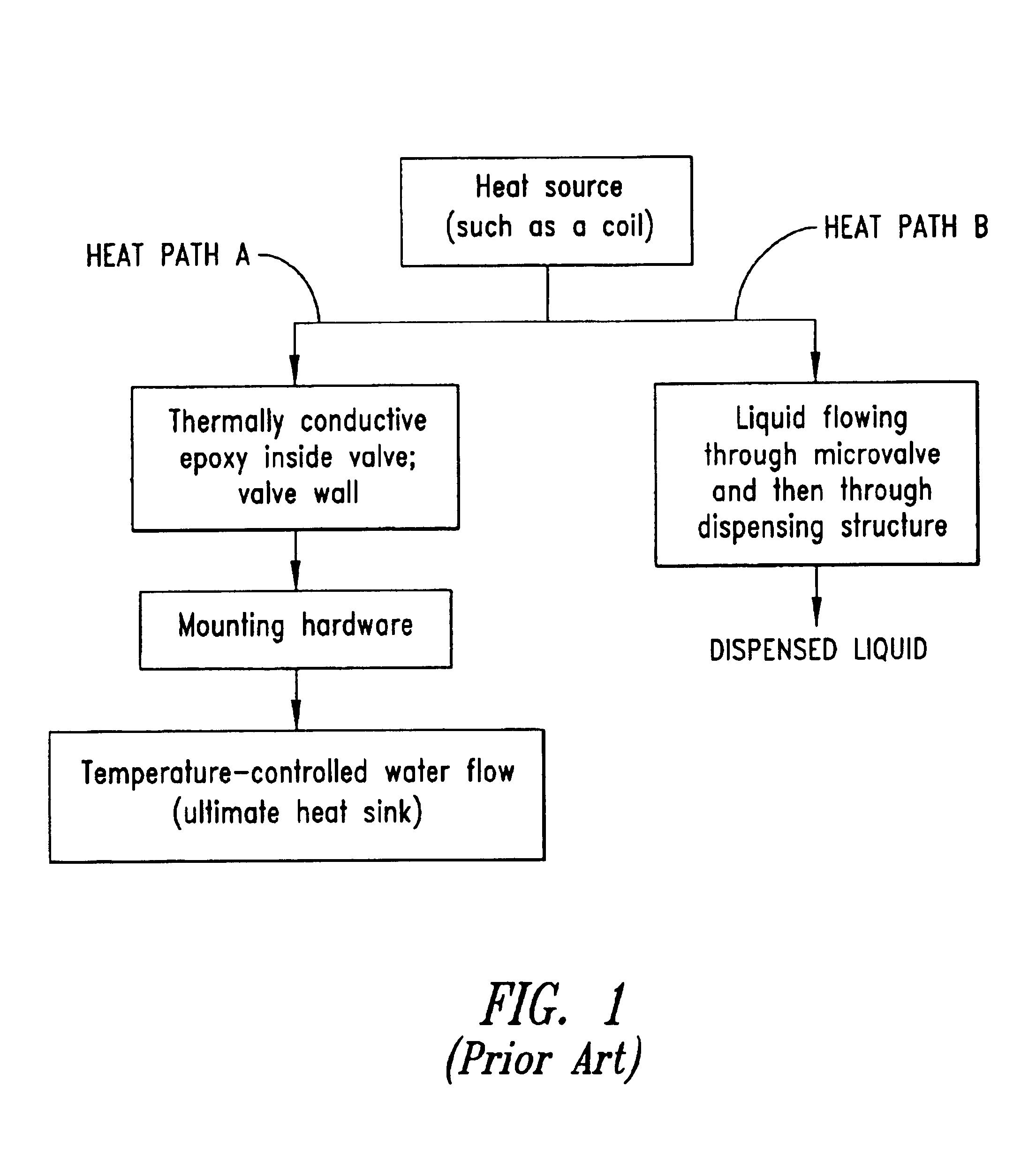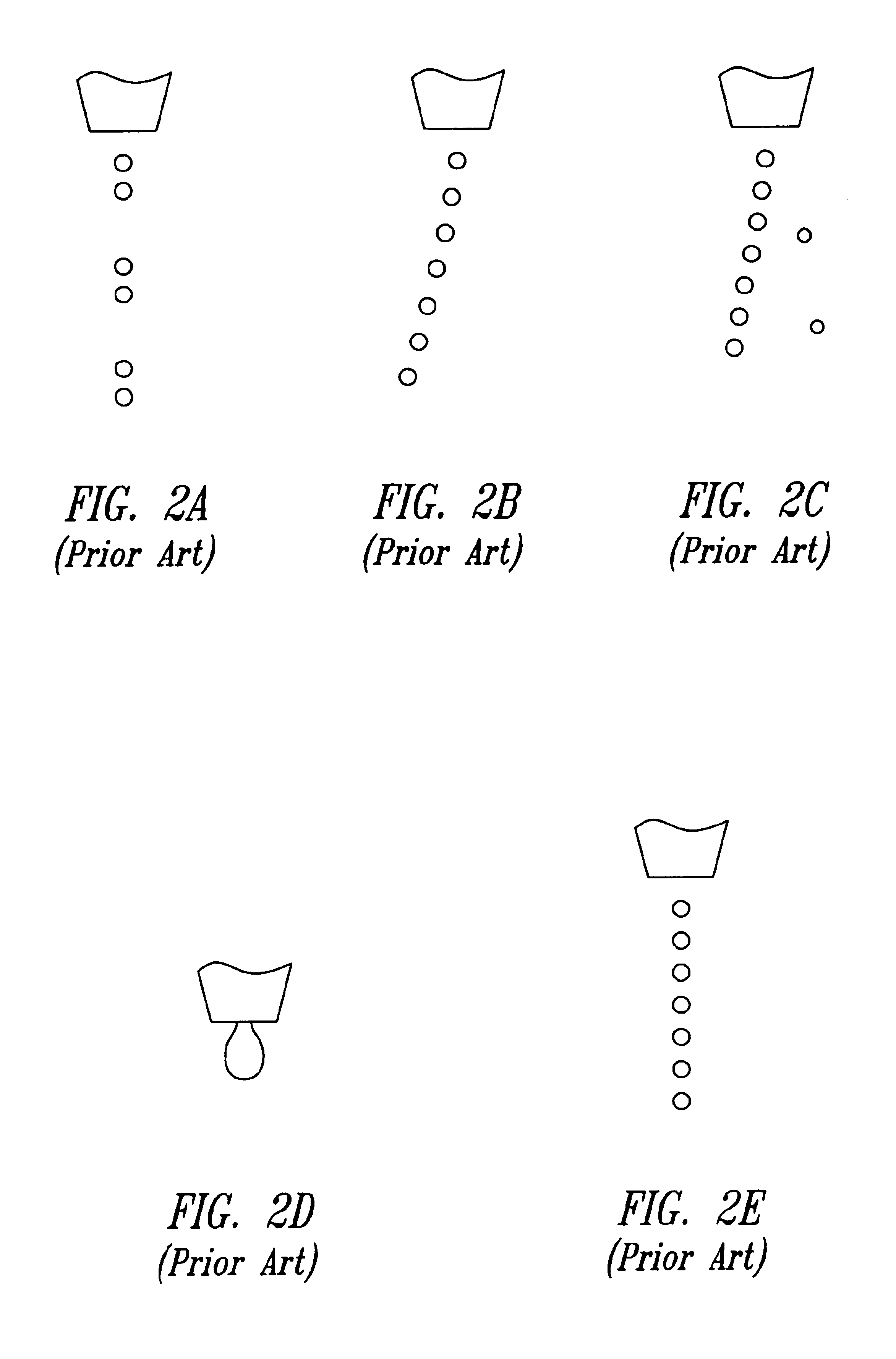Method and system for controlling the temperature of a dispensed liquid
- Summary
- Abstract
- Description
- Claims
- Application Information
AI Technical Summary
Benefits of technology
Problems solved by technology
Method used
Image
Examples
Embodiment Construction
[0036]A temperature control system, and in particular, a system and corresponding method for controlling the temperature of a dispensed liquid, is described in detail herein. In the following description, numerous specific details are provided, such as specific microvalve printhead configurations, piezoelectric dispensers, etc., to provide a thorough understanding of various embodiments of the invention. One skilled in the relevant art, however, will recognize that the invention can be practiced on various printhead dispenser configurations without one or more of the specific details, or configurations, methods, etc. In other instances, well-known structures or operations are not shown or not described in detail to avoid obscuring aspects of the invention.
[0037]Referring to the flowchart of FIG. 4, heat flow paths for a microvalve are illustrated in accordance with the present invention. A microvalve contains a heat source component such as solenoid 410 which generates heat. This he...
PUM
 Login to View More
Login to View More Abstract
Description
Claims
Application Information
 Login to View More
Login to View More - R&D
- Intellectual Property
- Life Sciences
- Materials
- Tech Scout
- Unparalleled Data Quality
- Higher Quality Content
- 60% Fewer Hallucinations
Browse by: Latest US Patents, China's latest patents, Technical Efficacy Thesaurus, Application Domain, Technology Topic, Popular Technical Reports.
© 2025 PatSnap. All rights reserved.Legal|Privacy policy|Modern Slavery Act Transparency Statement|Sitemap|About US| Contact US: help@patsnap.com



